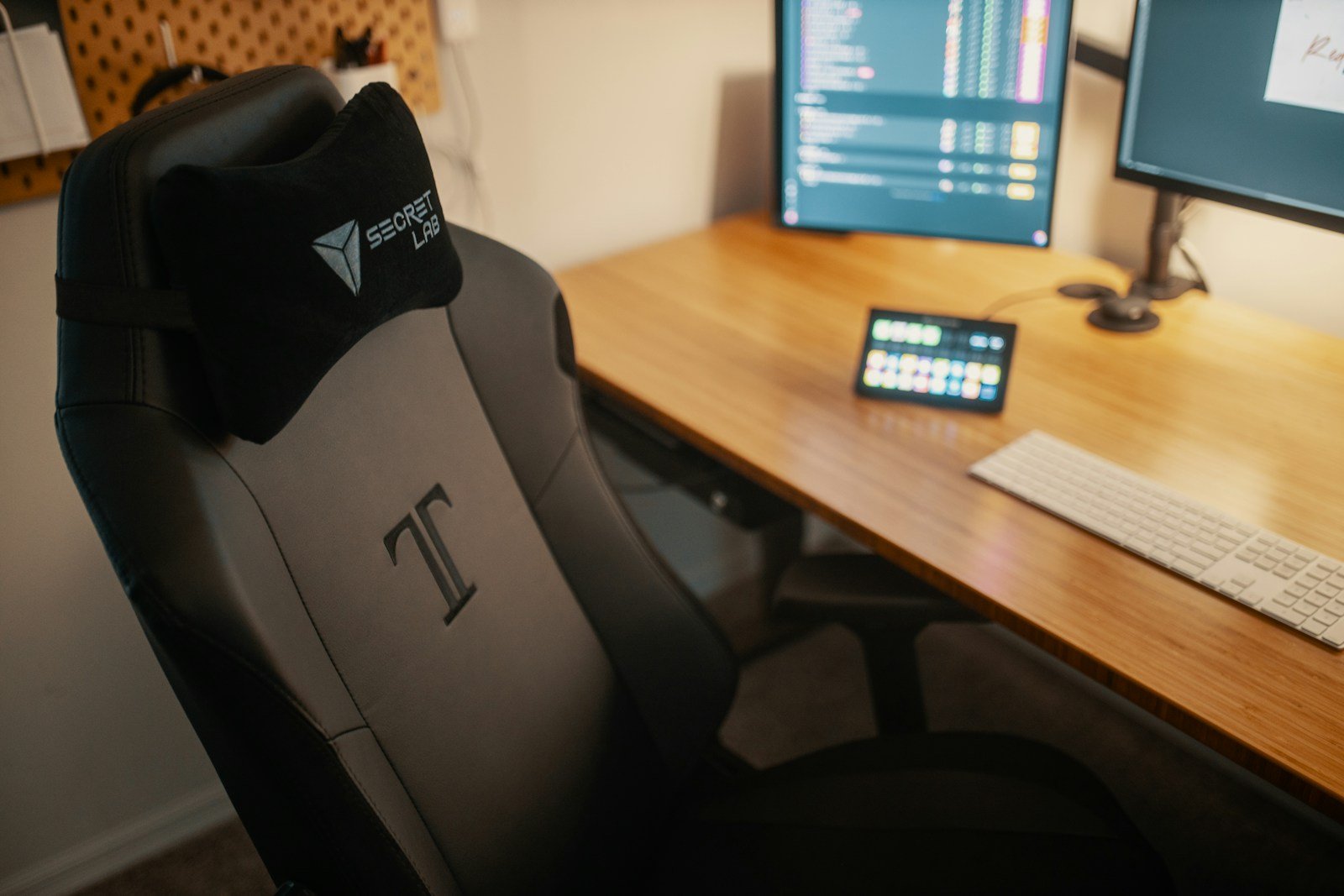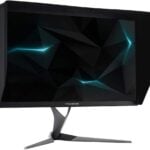Finding the right office chair for extended work sessions can be a game-changer for your comfort and productivity. As more people work long hours at desks, having proper support becomes essential for preventing pain and maintaining focus. The Branch Verve Chair currently stands out as the best overall office chair for 2026, offering adjustable lumbar support, a contoured seat, and a breathable 3D knit backrest that provides comfort during marathon work sessions.
When selecting a chair for extended use, it’s worth considering options from trusted brands like Herman Miller, Steelcase, and Branch. These manufacturers have been tested extensively in real-world conditions by professionals who spend countless hours at their desks. While premium chairs like the Herman Miller Aeron come with higher price tags around $1,410, budget-friendly alternatives like the Branch Ergonomic Chair at $339 offer solid support without breaking the bank.
The ideal chair for long hours should balance ergonomic features with your body type and work style. Look for adjustable components that can be customized to your specific needs, especially lumbar support that maintains proper posture throughout the day. Features like breathable materials and flexible backrests are particularly valuable during those marathon work sessions when comfort makes all the difference.
The Best Office Chairs for Sitting Long Hours (2026 Edition)
When you’re working long hours, the right chair can make or break your comfort, posture, and productivity. The best chairs combine ergonomic design, adjustability, and durable materials to support your spine and reduce fatigue.
🏆 Top 7 Office Chairs for Long Hours (Ranked)
| Rank | Chair Name | Best For | Key Features | Price Range (USD) |
|---|---|---|---|---|
| 🥇 1 | Herman Miller Aeron (Remastered) | All-day comfort & ergonomics | Breathable mesh, adjustable lumbar, tilt limiter | $1,195–$1,895 |
| 🥈 2 | Steelcase Gesture | Posture variety & tech users | 3D LiveBack support, arm adjustability, premium build | $1,099–$1,599 |
| 🥉 3 | Branch Ergonomic Chair Pro | Affordable premium comfort | 7 adjustment points, lumbar support, mesh back | $329 |
| 4 | Secretlab Titan Evo 2024 | Long gaming or work sessions | Memory foam lumbar, recline up to 165°, magnetic headrest | $519–$649 |
| 5 | Humanscale Freedom Headrest | Minimalist design lovers | Self-adjusting recline, gel seat cushion | $1,099 |
| 6 | HON Ignition 2.0 | Budget ergonomic pick | Adjustable lumbar, breathable mesh, tilt tension | $399 |
| 7 | Sihoo Doro C300 | Best value for ergonomics | Dynamic lumbar, 3D armrests, headrest | $279 |
🥇 1. Herman Miller Aeron (Remastered)
Best for: Professionals sitting 8–10 hours daily.
- Why it’s great: Industry benchmark for ergonomics. The mesh seat keeps you cool, while posture fit support aligns your spine naturally.
- Pros: Exceptional adjustability, durable build, eco-friendly materials.
- Cons: Expensive, limited cushioning for some users.
- Ideal for: Office executives, designers, and anyone with back issues.
🥈 2. Steelcase Gesture
Best for: Multi-device users (laptop, phone, tablet).
- Why it’s great: Designed around natural human movement. The arms adjust in nearly every direction.
- Pros: Extremely supportive seat, flexible back, exceptional build quality.
- Cons: Pricey; heavier than most chairs.
- Ideal for: Programmers, multitaskers, and hybrid workers.
🥉 3. Branch Ergonomic Chair Pro
Best for: Comfort on a budget.
- Why it’s great: Offers premium ergonomics at a mid-range price.
- Pros: 7 adjustment points, lumbar support, breathable mesh.
- Cons: Not as plush as high-end chairs.
- Ideal for: Home offices and startups.
💺 4. Secretlab Titan Evo 2024
Best for: Gamers and professionals alike.
- Why it’s great: Combines gaming aesthetics with serious ergonomic engineering.
- Pros: Adjustable lumbar support, recline, magnetic memory foam headrest.
- Cons: Bulky for smaller spaces.
- Ideal for: Gamers, streamers, and long-hour sitters.
🧠 5. Humanscale Freedom Headrest
Best for: Minimalist comfort and automatic support.
- Why it’s great: Self-adjusting recline eliminates manual controls.
- Pros: Elegant design, durable, eco-conscious.
- Cons: Limited manual adjustability.
- Ideal for: Professionals who prefer simplicity and style.
💰 6. HON Ignition 2.0
Best for: Budget-conscious buyers.
- Why it’s great: Ergonomic support at a fraction of the cost.
- Pros: Adjustable lumbar, tilt lock, breathable mesh.
- Cons: Build quality not as refined as premium models.
- Ideal for: Students, freelancers, and small offices.
🔧 7. Sihoo Doro C300
Best for: Value and flexibility.
- Why it’s great: Offers excellent adjustability for under $300.
- Pros: 3D armrests, dynamic lumbar, headrest, good recline.
- Cons: Slightly firm seat for long sessions.
- Ideal for: Remote workers and budget ergonomic seekers.
🧩 Key Buying Tips
- Prioritize adjustability – Look for seat height, armrest, lumbar, and recline adjustments.
- Choose breathable materials – Mesh prevents heat buildup during long sessions.
- Check lumbar support – A chair that supports your lower back reduces fatigue.
- Test seat depth – Your knees should bend comfortably with 2–3 inches between seat and leg.
- Invest for the long term – A great chair is a 5–10 year investment in your health.
🏁 Final Verdict
| Category | Top Pick | Why |
|---|---|---|
| Best Overall | Herman Miller Aeron | Unmatched ergonomic comfort and durability |
| Best for Tech Users | Steelcase Gesture | Ideal for multitasking and multiple devices |
| Best Value | Branch Ergonomic Chair Pro | Premium comfort at a mid-range price |
| Best Budget Option | Sihoo Doro C300 | Excellent ergonomics under $300 |
| Best for Style & Simplicity | Humanscale Freedom | Sleek design with automatic support |
🪑 Summary
If you spend long hours at your desk, the Herman Miller Aeron and Steelcase Gesture remain the gold standards for comfort and posture support. For budget-conscious buyers, the Branch Ergonomic Chair Pro and Sihoo Doro C300 deliver exceptional value without compromising on ergonomics.
Sources:
- Forbes – Best Office Chairs 2025
- WIRED – 15 Best Office Chairs of 2025
- TechRadar – Best Office Chairs for Comfort 2025
Key Takeaways
- Ergonomic chairs with adjustable features provide essential support for preventing pain during long work hours.
- Price ranges vary widely from budget-friendly options around $300 to premium chairs over $1,400, with quality options at every level.
- The right chair should match your body type, work habits, and specific comfort needs rather than following a one-size-fits-all approach.
Key Features of Top Ergonomic Office Chairs
When choosing an office chair for long hours, certain features make all the difference between comfort and pain. The best ergonomic chairs combine adjustability, quality materials, and support features to keep you comfortable during extended work sessions.
Adjustability for Personalized Comfort
The most important feature of any ergonomic office chair is adjustability. Top models offer multiple adjustment points to fit different body types and preferences.
Height adjustment is essential – your feet should rest flat on the floor while your knees maintain a 90-degree angle. Look for chairs with easy-to-use pneumatic height controls.
Seat depth adjustment helps accommodate different leg lengths. The ideal setting leaves 2-3 inches of space between the seat edge and the back of your knees.
Armrest adjustability in at least 3 directions (height, width, and depth) allows proper support for your arms and shoulders. The best chairs offer 4D armrests that also pivot.
Backrest tilt tension controls how easily the chair reclines and the amount of resistance you feel. This feature helps you find the perfect balance between support and movement.
Materials and Build Quality for Durability
High-quality materials determine both comfort and longevity of an office chair. The best options balance breathability, support, and durability.
Mesh backrests provide excellent ventilation for all-day comfort, preventing heat buildup during long work sessions. They’re particularly beneficial in warmer environments or for people who tend to get warm easily.
Seat cushions should use high-density foam that maintains shape even after years of use. Premium chairs often use multi-layered foam with different densities for optimal support.
Frame materials matter significantly. Metal frames (especially aluminum) offer the best durability, while high-grade plastic components can provide flexibility where needed. Cheap plastic parts are the first to fail in lower-quality chairs.
The base should be sturdy with smooth-rolling casters appropriate for your floor type. Five-point bases provide better stability than four-point alternatives.
Support and Ergonomic Design for Well-being
Proper support features help maintain good posture and prevent pain during long work sessions.
Lumbar support is critical for preventing lower back pain. The best chairs offer adjustable lumbar support that can be positioned to match your spine’s natural curve. Some premium models include dynamic lumbar systems that move with you.
Proper back contour helps distribute pressure evenly across your back. Quality ergonomic chairs follow the natural S-curve of the spine rather than forcing a completely straight posture.
Headrests, while optional, provide valuable neck support during reclined positions. Adjustable headrests are preferable since they can be positioned to match your height and preferred sitting position.
Seat pan design affects circulation. Waterfall-edge seats reduce pressure on the thighs and improve blood flow during long sitting periods.
Optimal Chair Selection for Different Users
Finding the perfect office chair depends on individual needs and body types. Different chairs offer varying features that can significantly impact comfort during long hours of work.
Chairs Catering to Various Body Types
When selecting an office chair for extended use, body type considerations are essential. The Herman Miller Aeron comes in three different sizes (A, B, and C) specifically designed to accommodate various body shapes and weights. Users with broader shoulders often benefit from chairs with wider backrests and seats.
Weight capacity is another crucial factor. Standard office chairs typically support up to 250 pounds, but specialized models like the Steelcase Gesture can accommodate up to 400 pounds. Taller individuals should look for chairs with adjustable seat height ranges that extend higher than average.
Petite users face unique challenges and should seek chairs with adjustable seat depth to prevent the seat pan from pressing against the back of their knees. Some task chairs include seat sliders that allow for this customization.
Additional Considerations for Specific Needs
Beyond body type, specific work habits and health concerns should influence chair selection. For those with back pain, chairs with robust lumbar support like the Steelcase Leap with its adjustable backrest tension can provide relief during long sitting sessions.
Users who move frequently between tasks might prefer a swivel office chair with smooth-rolling casters. The material also matters: mesh backrests offer better breathability for those who tend to overheat, while cushioned seats provide comfort for those concerned about pressure points.
Alternative seating options have gained popularity too. Exercise balls can serve as temporary seating alternatives that promote core engagement, while gaming chairs often feature extra cushioning and support for marathon sessions.
Color choices extend beyond aesthetics—lighter colors show wear less obviously in high-use environments. For at-home offices, considering how a chair complements existing décor can be important for creating a harmonious workspace.
Frequently Asked Questions
Choosing the right office chair for long hours involves considering key ergonomic features, budget limitations, and specific needs for back support. Experts have identified several important factors to examine when selecting a chair that will maintain comfort during extended periods of sitting.
What are the top ergonomic chairs recommended by chiropractors for extended office use?
Chiropractors typically recommend the Steelcase Gesture and Herman Miller Embody for extended office use. These chairs offer exceptional lumbar support and adjustability that helps maintain proper spinal alignment.
Both models feature advanced adjustment mechanisms that allow users to customize the chair to their specific body types and needs. This personalization helps prevent the development of back pain and other posture-related issues.
The Herman Miller Aeron is another chiropractor favorite due to its breathable mesh design and PostureFit SL technology that supports the natural S-shape of the spine.
Which office chair models are renowned for alleviating back pain during prolonged sitting periods?
The Steelcase Leap stands out for back pain relief with its LiveBack technology that changes shape to mimic spine movement. Its design provides excellent lower back support during various sitting positions.
Herman Miller’s Embody was specifically designed with input from physicians and biomechanical engineers to support the spine. Its unique Backfit adjustment allows the chair to align perfectly with the user’s spine.
The Humanscale Freedom features a self-adjusting recline that provides constant support without complicated levers or knobs. This automatic adjustment helps maintain proper posture even during long sitting sessions.
What are the most comfortable and affordable office chairs suitable for long hours of work?
The Ticova Ergonomic office chair offers impressive comfort at around $179-$200, making it one of the most affordable quality options. It includes adjustable lumbar support and a mesh back for breathability.
BTOD’s Akir chair provides excellent value with multiple adjustment points and comfortable padding at a mid-range price point. It delivers many high-end features without the premium cost.
The HON Ignition 2.0 balances affordability with comfort, featuring a contoured seat cushion and adjustable arms. It provides good support for full workdays without breaking the budget.
How do I choose the best office chair for maintaining proper posture over extended work hours?
Assess your mobility needs and work environment first. Consider whether you need to move frequently or stay in one position, as this affects the type of chair that works best.
Look for chairs with adjustable lumbar support that can be positioned to match the natural curve of your spine. This feature is essential for maintaining healthy posture during long sitting periods.
Ensure the chair has height adjustability, allowing your feet to rest flat on the floor with knees at a 90-degree angle. This foundation is crucial for overall posture alignment.
What advances have been made in ergonomic office chairs for long sessions of sitting?
Dynamic lumbar support systems that adjust automatically as you move are becoming standard in high-end ergonomic chairs. These systems provide constant support regardless of position.
New breathable materials that regulate temperature have improved comfort during long sitting sessions. These fabrics prevent heat buildup and discomfort that might cause fidgeting and poor posture.
AI-assisted adjustment technology is emerging in some models, using sensors to detect posture issues and suggest optimal settings. This technology helps users maintain healthier sitting habits.
What are the key features to look for in an office chair designed for long-term use and comfort?
Adjustable armrests are essential for preventing shoulder and neck strain. Look for 4D armrests that adjust in height, width, depth, and angle for optimal support.
Seat depth adjustment helps accommodate different leg lengths, ensuring proper blood circulation. The ideal setting allows 2-4 fingers of space between the seat edge and back of knees.
A synchro-tilt mechanism that maintains proper angle between seat and backrest during recline helps reduce pressure on the spine. This feature supports dynamic sitting throughout the day.







